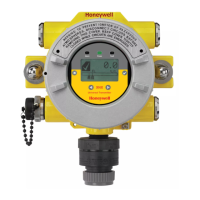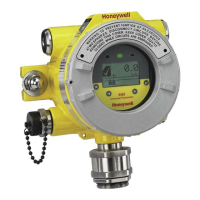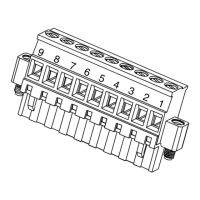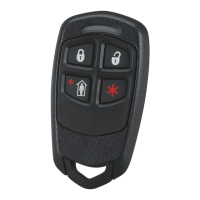XNX Universal Transmitter
Modbus Protocol
192
Modbus and the XNX transmitter
The transmitter can be tted with the optional Modbus interface
card (Honeywll part number XNX-MB). Authoritative information
on the Modbus protocol can be found at www.modbus.org.
The transmitter supports Modbus/RTU over an RS-485 physical
layer. The interface is isolated and includes a switchable 120
ohm termination resistor. Baud rates from 1200 to 38,400 are
supported with 19,200 as the default (8 data bits, even parity, 1
stop bit).
Most of the operations that are possible with the HART and
local user interfaces can also be performed using the Modbus
interface. This includes test, calibration and conguration
operations. This section describes only how to monitor the
transmitter status using Modbus.
Perform the zero calibration before the span calibration.
Follow the zero and span calibration procedure in the Zero
and Span Calibration for EC/mV Sensors and Searchpoint
Optima section.
Some of the relevant Modbus holding registers are listed in the
following table. In most installations, the transmitter reads only
the rst ve registers (four data). The assignment of the rst
eight registers (or six data) is identical to the Honeywell Analytics
XCD gas sensor.
Building an effective Modbus automatic gas detection system
requires checking for faults (using iFaultWarnNumber or
iAlmFltLev) and checking iMonitoringState to conrm that the
transmitter is not inhibited or in calibration. The pseudo code
example in Figure 245 suggests computation that would be
made in external automation equipment.
See Modbus in the Installation and Operation section for
information on installing the optional Modbus hardware. See
Fieldbus Options for information on setting the Modbus baud
rate and address using the local user interface. See the HART
Sink, Source, and Isolated Wiring
section for information on
setting the Modbus parameters using the HART interface.
if(
((fCurrentConc < TLV) or (iAlmFltLev & 3 == 0))
// low concentration
and
((iFaultWarnNumber < 1000) or (iAlmFltLev & 64 == 0))
// no fault
and
((iMonitoringState == 1) or (iMonitoringState == 7))
// not inhibited
and
(
(Transport layer SW indicates good Comm.)
or
(iHeartBeat changes every 5 seconds)
) // Modbus link healthy
) Then the area is safe.
Figure 245. Modbus Pseudo Code Example
Modbus connections are shown in the following gure.
